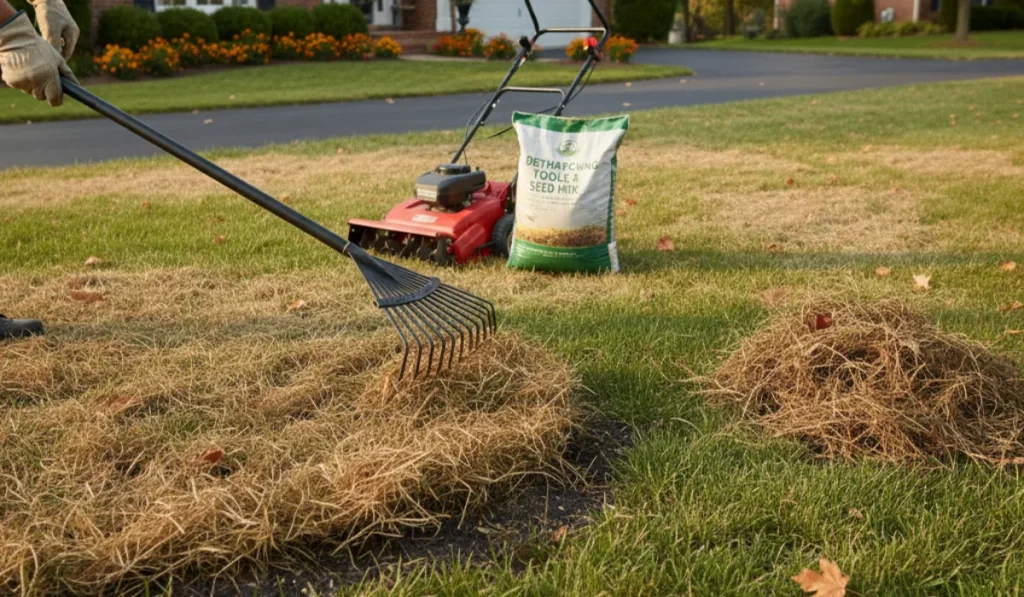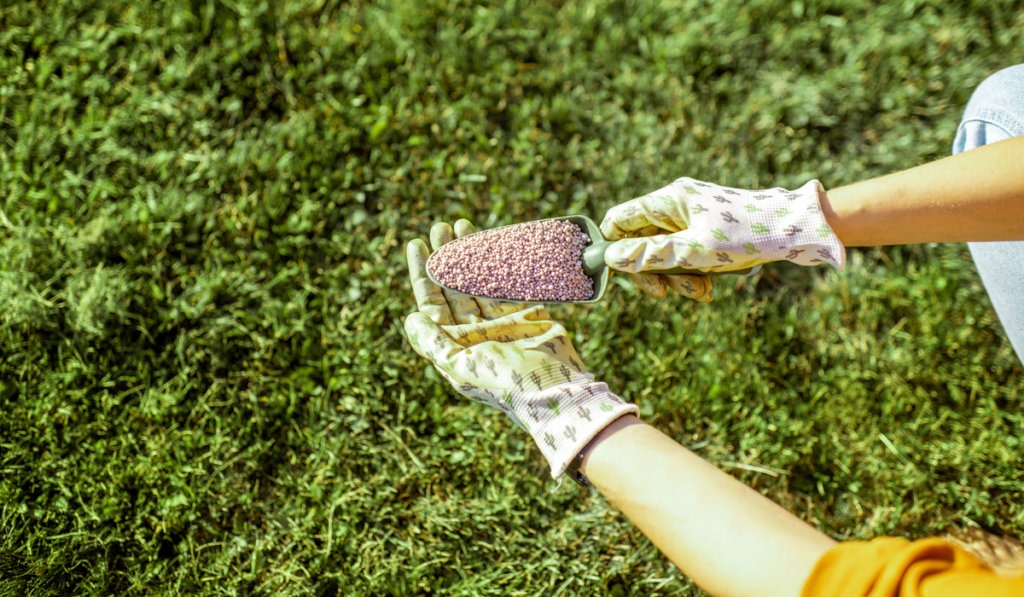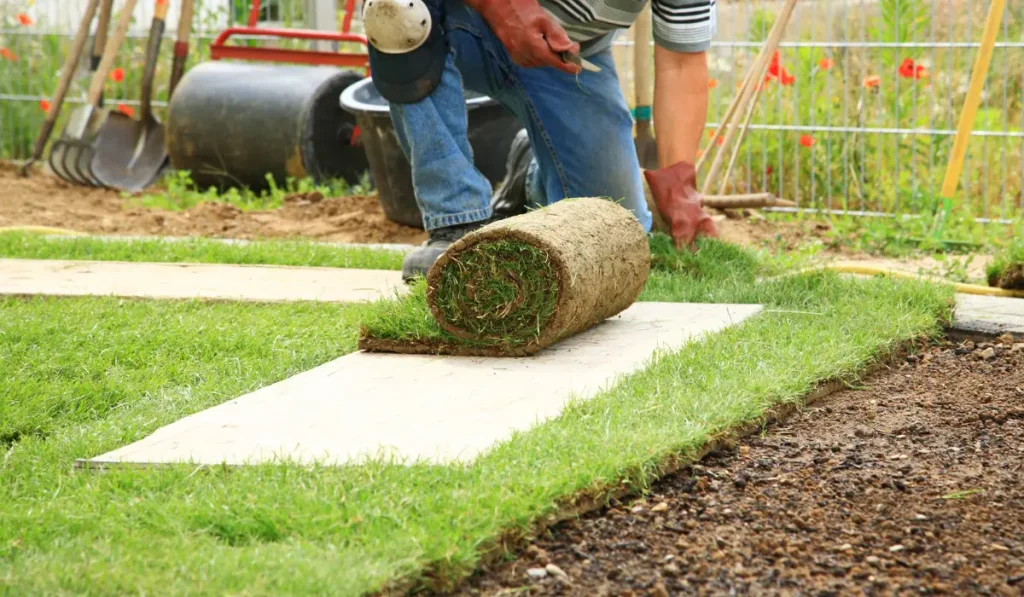If you have bermudagrass lawns, you know they’re strong, love the heat, and grow well in southern lawns like we have in California. But even tough grass can get weeds.
That’s where weed and feed comes in. This product helps with weed control and feeds your lawn at the same time. But not all weed and feed is right for every grass type, and using it wrong can hurt your lawn.
In this guide, you’ll learn how weed and feed works, how to use it safely, and when it’s better to use something else for your bermudagrass.
Key Takeaways
- Weed and feed is a mix of weed killer and fertilizer that helps stop weeds and feed your lawn.
- Some products can hurt bermudagrass, so always pick one made for warm-season lawns and check the label.
- Spring is the best time to apply it, and mowing or watering the wrong way can make it less effective.
- Weed and feed should be skipped for new grass, grassy weeds, stressed lawns, or during fall and winter months.
What Is Weed & Feed and How Does it Work?
Weed and feed is a mix of two things: a weed killer and a lawn fertilizer.
The weed killer part is a type of herbicide that stops weeds.
Some use a pre-emergent herbicide, which blocks weeds like crabgrass before they grow. Others use a post-emergent herbicide to kill weeds like dandelion, chickweed, or henbit after they show up.
The feed part adds nutrients like nitrogen, phosphorus, and potassium to help your grass get green and grow fast during the growing season.
Most come in granular form, and you spread it with a spreader. Some products are liquids that you spray with a sprayer.
Always check your lawn’s size in square feet to use the right amount.
Is Weed & Feed Safe for Bermuda Grass?
Yes, weed and feed is safe for bermuda grass. However, while bermudagrass can handle many products, some can harm it. Here’s how to apply it safely:
Pick the Right Product for Bermuda Grass
Not all weed and feeds are made for bermuda grass or warm-season lawns like zoysia grass, bahia grass, or st. augustine grass. Many are made for cool-season grasses like fescue, rye grass, or bluegrass.
Always check the product label and make sure it’s safe for your grass type. If it says it’s for floratam, it’s only for that kind of st. augustinegrass.
Apply at the Right Time of Year
The best time to apply weed and feed is when your lawn comes out of dormancy in early spring or late spring, depending on the product label and whether you’re doing a second application.
Don’t apply it during the hot summer months or in early fall, when bermudagrass is getting ready to go dormant again.
Mow and Water the Right Way
Good mowing helps weed and feed work better. Don’t mow right before applying it, and wait 1–2 days after using it to mow again. Some products need watering after you spread them, and others need time to sit dry.
Follow the product label instructions closely.
When to Skip Weed & Feed for Bermuda Grass
Sometimes, it’s better to skip weed and feed for your turfgrass and use something else. Here’s when, and what to use instead.
Your Lawn is Newly Planted or Overseeded
If you’ve just laid grass seed or done overseeding your bermuda grass, don’t use weed and feed. The herbicide can stop the seed from growing and hurt young grass. Use the best fertilizer made for new lawns instead.
For lawn weeds, wait until the grass is strong, and then use a post-emergent weed killer on spots if needed.
You Have Grassy Weeds, Not Broadleaf Weeds
Most weed and feed only works on broadleaf weeds like dollarweed, dandelion, or henbit. If you have grassy weeds like nutsedge or annual bluegrass, it won’t help.
Consider using a pre-emergent herbicide or a slow-release fertilizer to get better results.
It’s the Wrong Time of the Year
Don’t use weed and feed in early fall or winter. Bermudagrass goes dormant then, so it won’t use the food, and the weed killer won’t work well. Instead, use a fertilizer with more potassium to help your lawn get ready for winter.
For lawn weeds, pull them by hand or use mulch to stop new ones.
Your Lawn is Weak or Stressed
If your lawn is under stress from heat, bugs, or not enough water, weed and feed can make it worse. Instead, treat weeds with a post-emergent herbicide using a sprayer, and focus on helping your lawn get healthy again before feeding it.
Frequently Asked Questions
Can I use weed and feed before it rains?
Yes, but light rain is better than heavy rain. Heavy rain can wash the product away before it works. Some types need dry time first, so always check the label to know if rain helps or hurts the results.
How long should kids and pets stay off the lawn after using weed and feed?
Kids and pets should stay off until the lawn is fully dry, which can take 24–48 hours. Some products need watering in, so wait until after watering and drying. Always read the product label for specific safety instructions.
Can I seed my lawn after using weed and feed?
No, the herbicide in weed and feed can stop new seeds from growing. Wait at least 4–6 weeks before seeding. This allows time for the weed killer to break down so your new grass can grow safely and properly.



